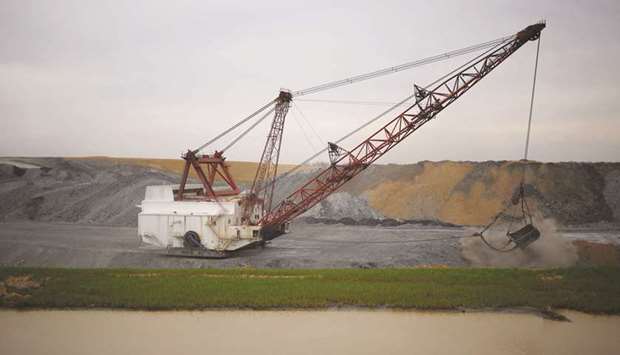A Reuters review of mining data shows an industry that has seen only modest gains in jobs and production this year — much of it from a temporary uptick in foreign demand for US coal rather than presidential policy changes.
US utilities are shutting coal-fired power plants at a rapid pace and shifting to cheap natural gas, along with wind and solar power.
And domestic demand makes up about 90% of the market for US coal.
“We’re not planning to build any additional coal facilities,” said Melissa McHenry, a spokeswoman for American Electric Power, one of the largest US utilities.”The future for coal is dictated by economics … and you can’t make those kinds of investments based on one administration’s politics.”
Coal plants now make up 47% of AEP’s capacity for power generation, a figure it plans to shrink to 33% by 2030.
The situation highlights the limitations of presidential policy on major industries and global economic trends.
As some energy experts have said all along, the forces that will make or break mining are well beyond the powers of the Oval Office.
A White House official did not respond to a request for comment.
Trump has likely done all he can do to help the industry, said Luke Popovich, a spokesman for the National Mining Association, which represents major US coal companies. “The government is no longer against us,” he said.”We now only have market forces to contend with.”
Trump has taken action on many promises he made to coal interests in states that helped him win the election.
The president started the process of killing former president Barack Obama’s Clean Power Plan, meant to reduce carbon emissions from power plants; ended an Obama-era moratorium on coal leasing on federal lands; ditched limits on dumping coal waste into streams; and started withdrawing the United States from the Paris Climate Agreement.
Now Trump’s Energy Secretary, Rick Perry, is attempting to push a rule through the independent Federal Energy Regulatory Commission that would subsidise power plants that store at least a 90-day supply of coal on site.
The goal is to extend the life of some coal burning power plants, a move Perry says will make the electric grid more reliable.
While the full impact of Trump’s coal policy could take years to understand, the changes so far are unlikely to boost domestic demand, energy analysts and utility officials said.
Trump has cast the coal industry as a victim of burdensome regulation.
The industry has lost more than 40% of its work force in less than a decade and seen production drop to its lowest levels since 1978.
Its share of the power market has fallen to less than a third from about half in 2003.
“We’re going to bring the coal industry back 100%,” Trump said at a rally in Virginia in August of 2016.
So far, progress has been limited.
US coal production is on track to rise more than 8% in 2017 over the previous year, to 790mn tonnes, according to the Energy Information Administration.
But 2018 output is expected to decline. The number of coal miners has also risen slightly to 51,900 in October, up about 2,200 since November 2016 — but down about 70% from a 1985 peak, according to the Labor Department. On November 1, Trump cited the modest production increases in a Tweet, saying, “It is finally happening for our great clean coal miners!”
But these increases are largely attributable to demand for US coal from Asian steel mills after temporary outages from their usual suppliers in Australia, according to James Stevenson, a coal analyst at IHS Markit.
During the first six months of 2017, Asian countries took in 7.5mn short tonnes of US coal, up 97% over the same period in 2016, according to the EIA. That demand will soon fade, Stevenson said.
Forecasts from utilities and the US government reveal little reason for hope of a sustained coal rebound.
Utilities are expected to shut down more than 13,600 megawatts of coal plant capacity in 2018.
That follows a loss of nearly 8,000 MW this year and 13,000 MW in 2016, according to EIA and Thomson Reuters data.
By 2025, coal-fired power plant capacity will dip to 226,380 MW, down about 30% from 2011, according to EIA.
Three Texas coal plants owned by Vistra Energy Corp subsidiary Luminant are among the latest to close, bringing the number of plants that shut, or plan to, to 265 since 2010 — a figure higher than the 258 plants that remain, according to the Sierra Club, which has campaigned against coal.
Vistra said the closures were forced by lower prices for natural gas and renewable power — and not by environmental regulations.
A dragline excavator mines coal at the Peabody Energy Somerville Central strip mine in Oakland City, Indiana, US. A year after Donald Trump was elected president on a promise to revive the ailing US coal industry, the sector’s long-term prospects for growth and hiring remain as bleak as ever.



